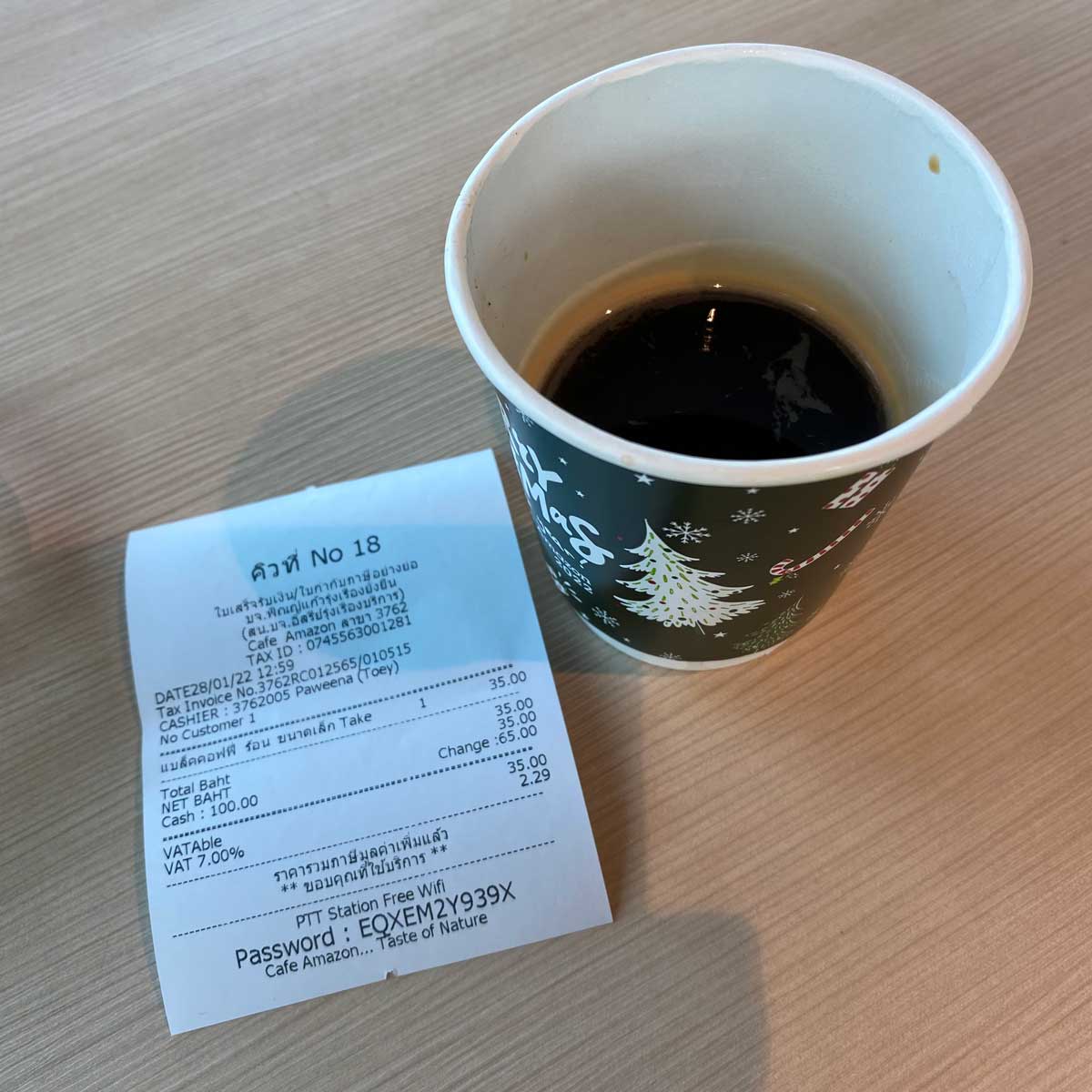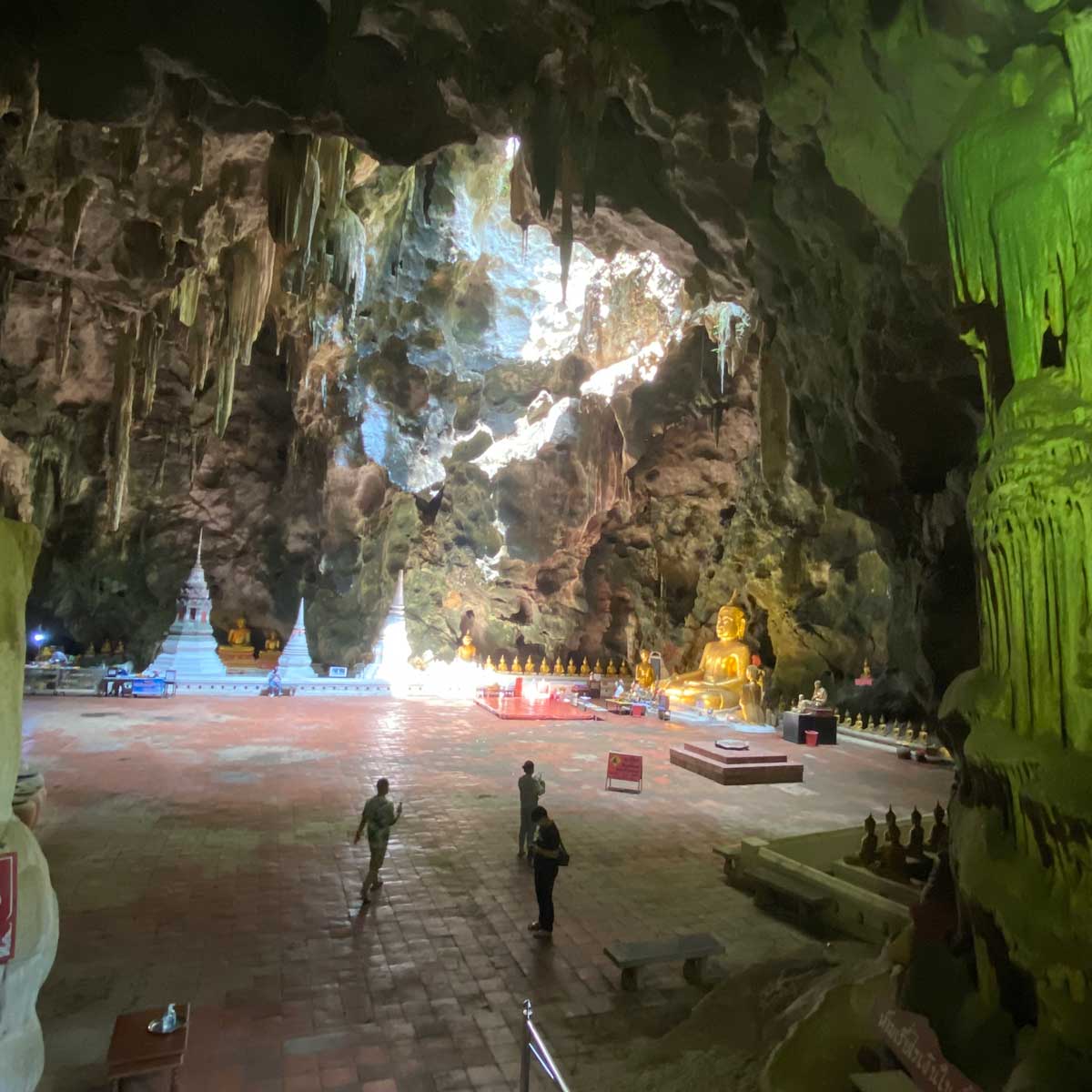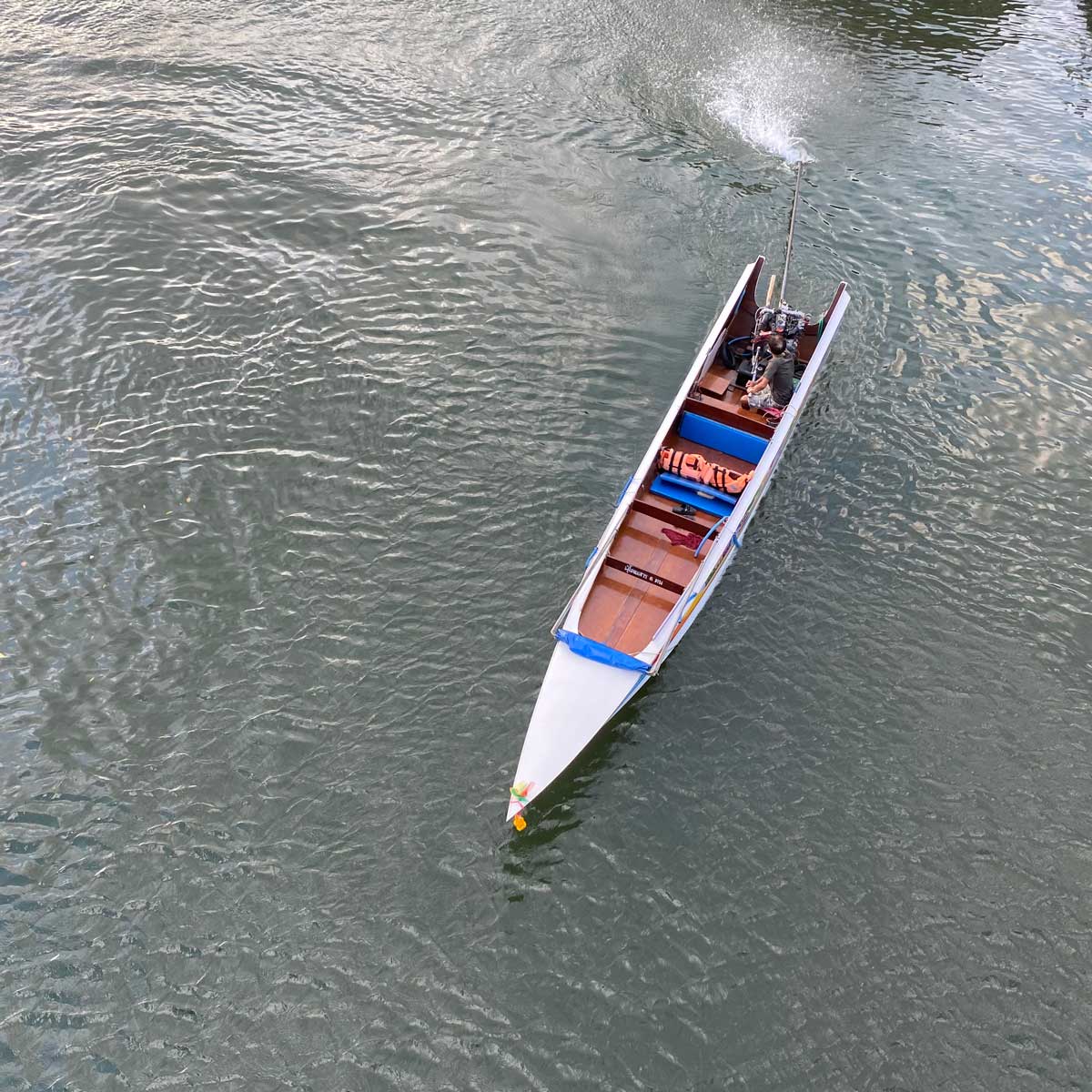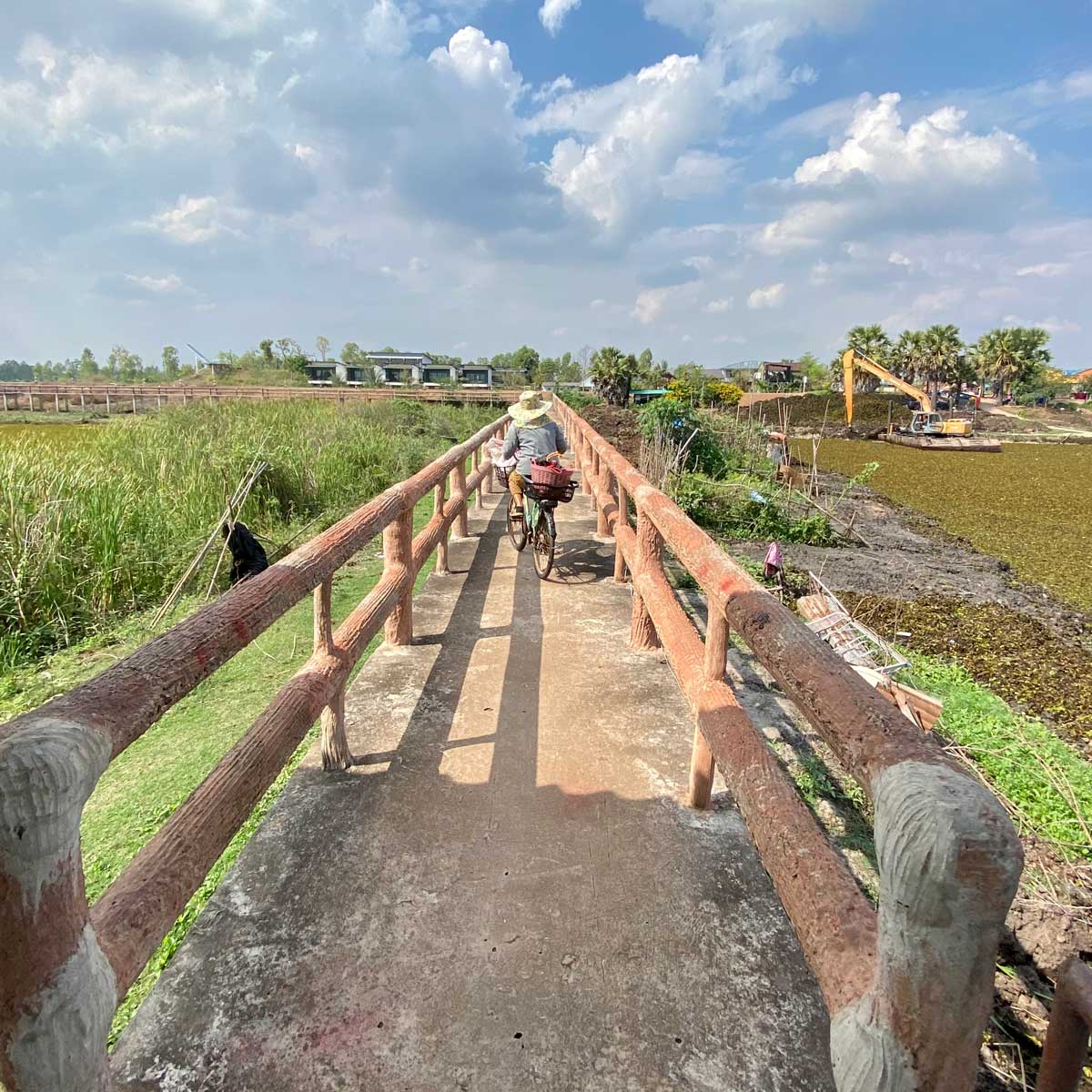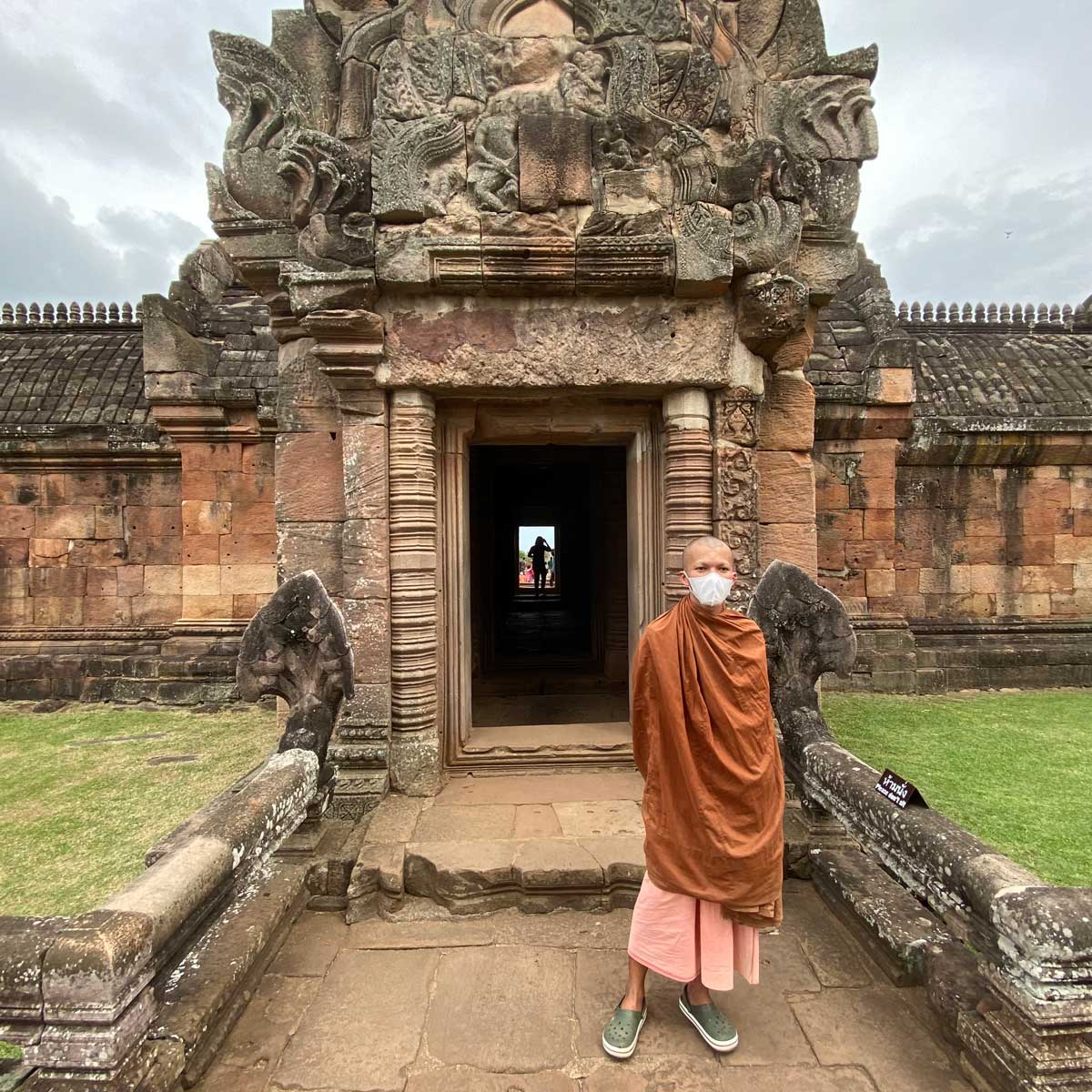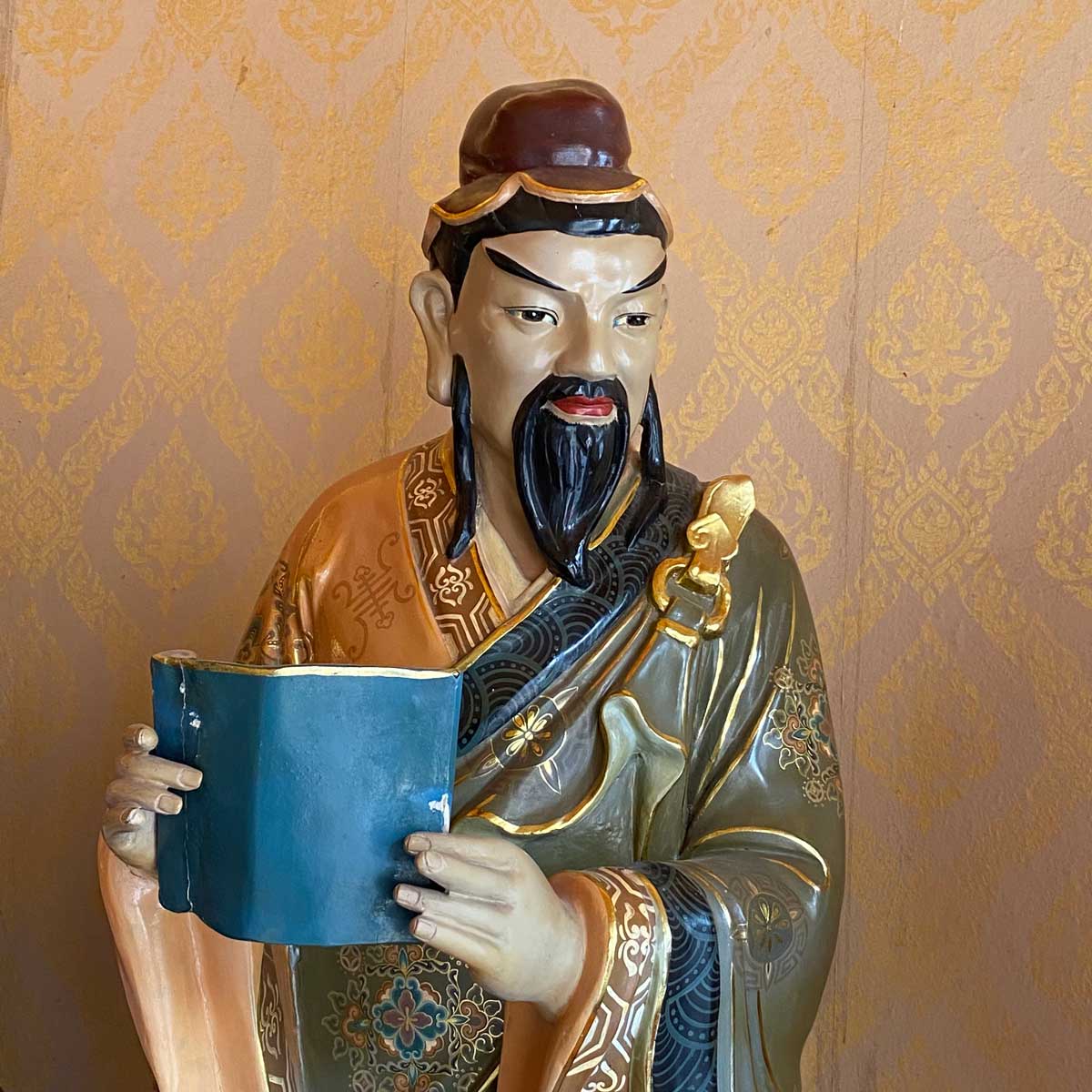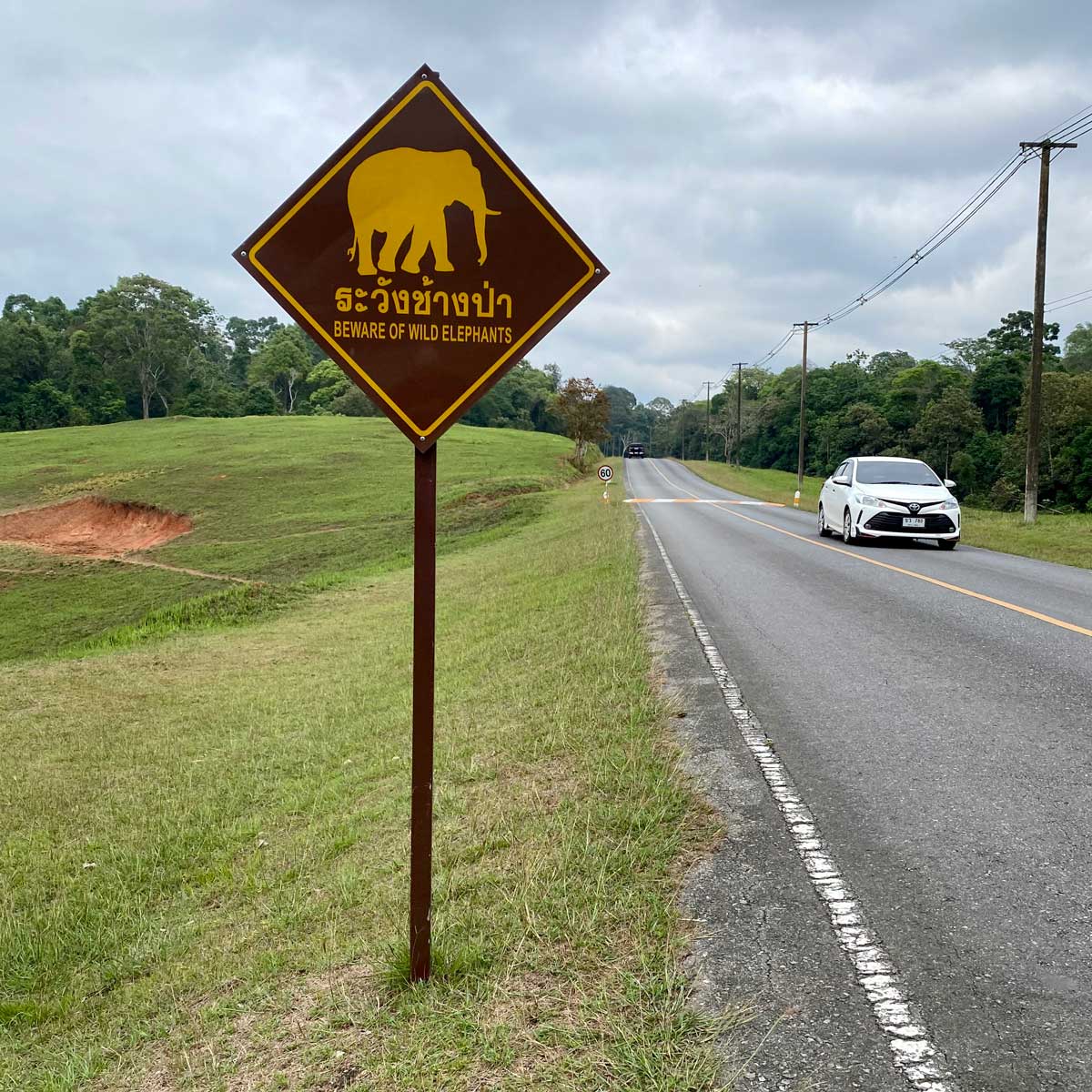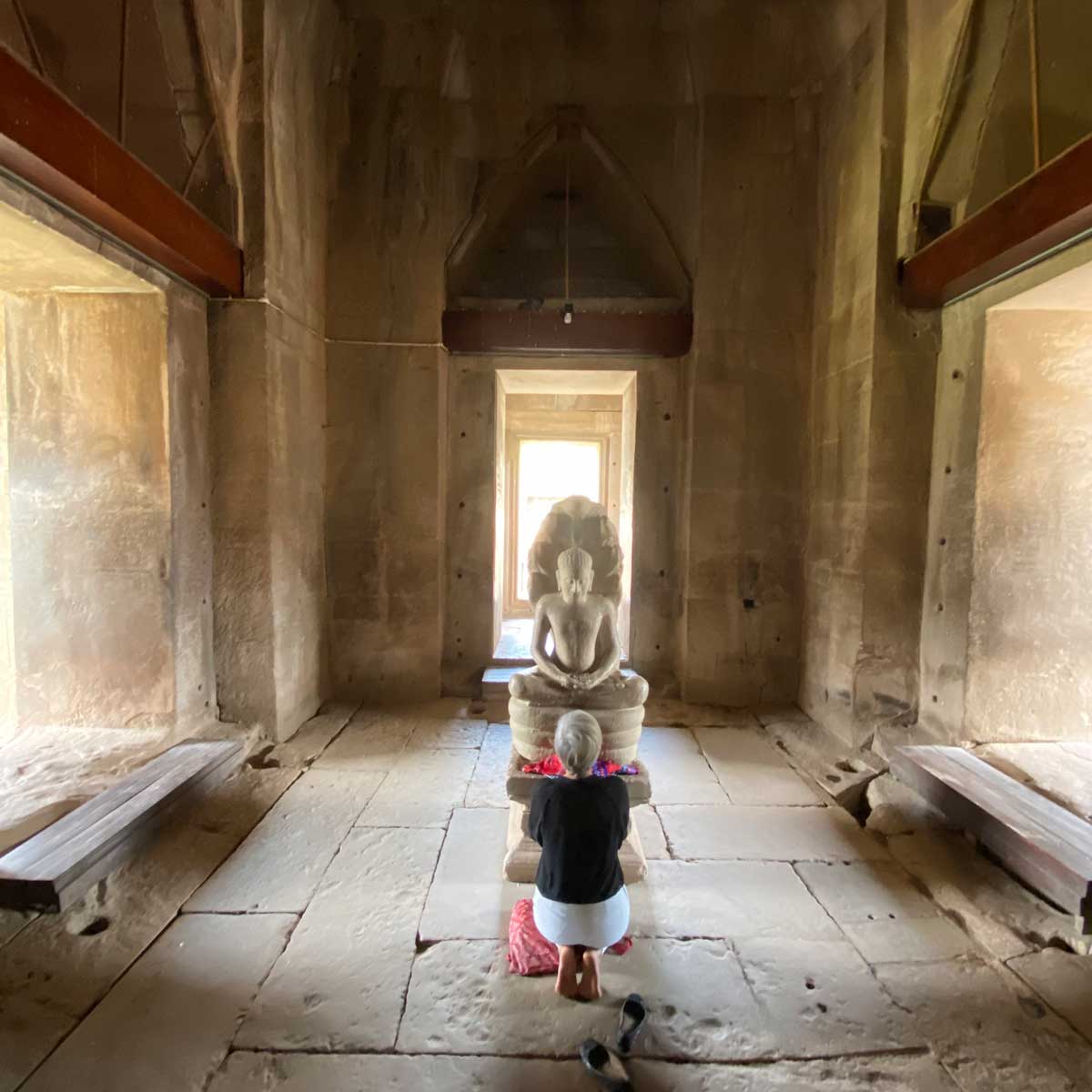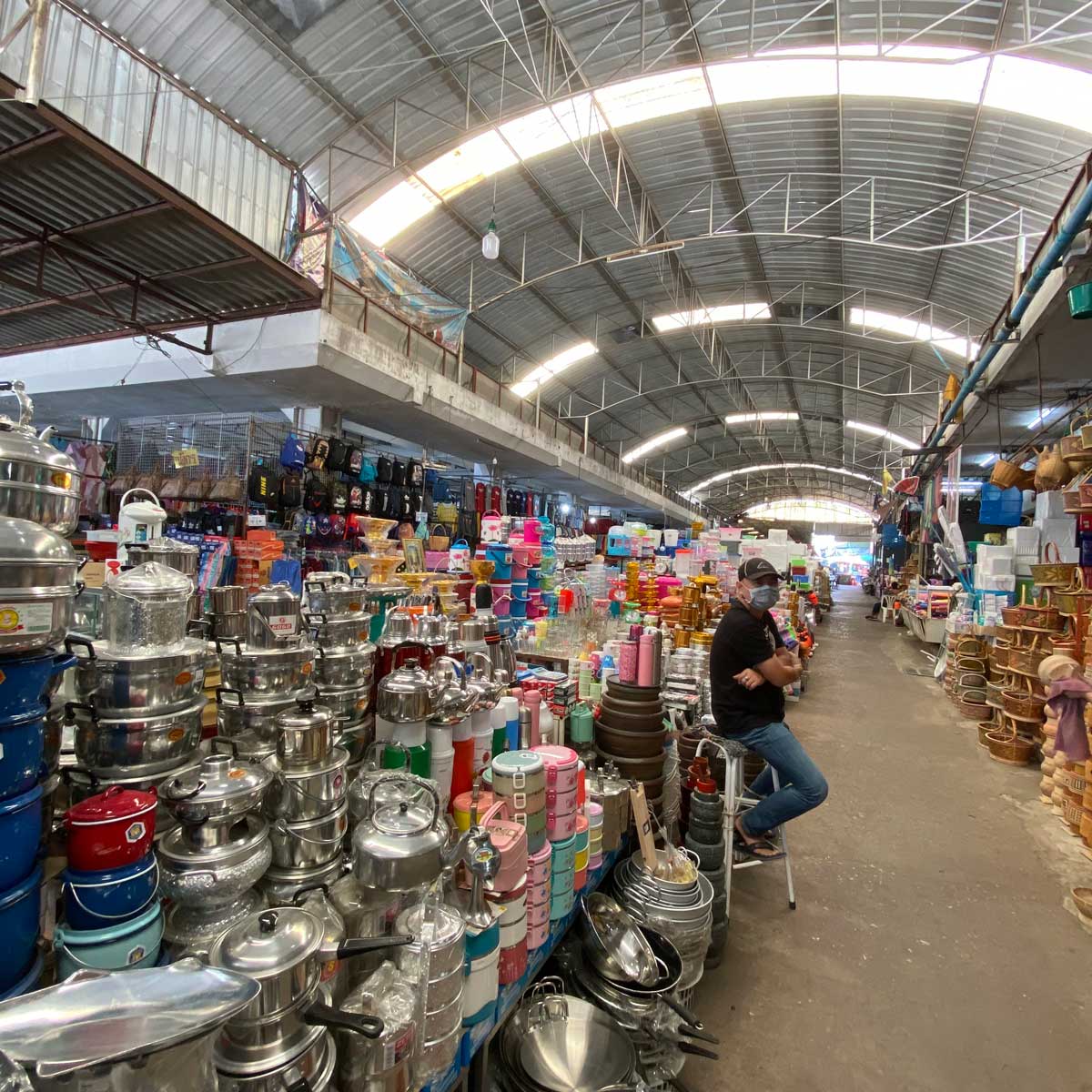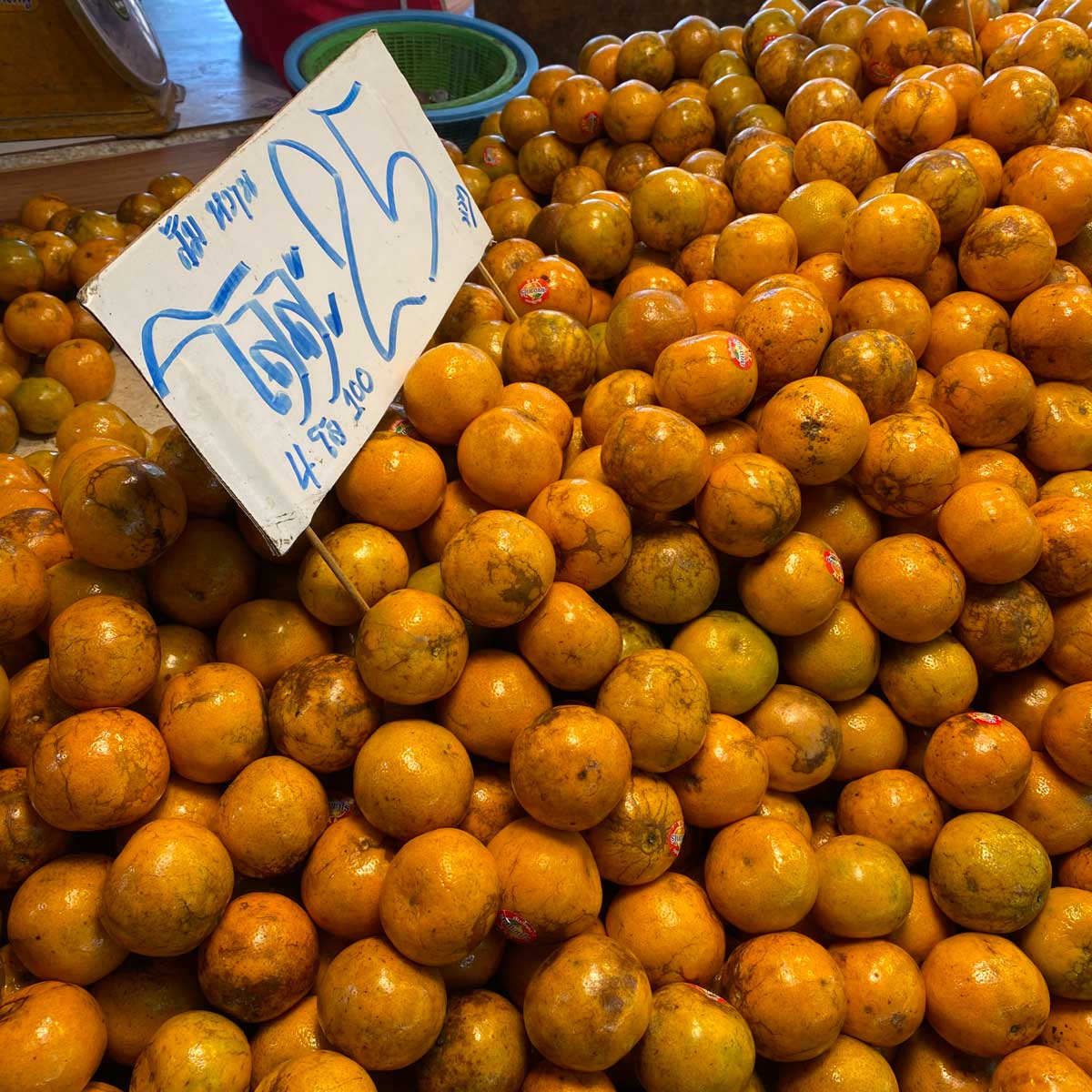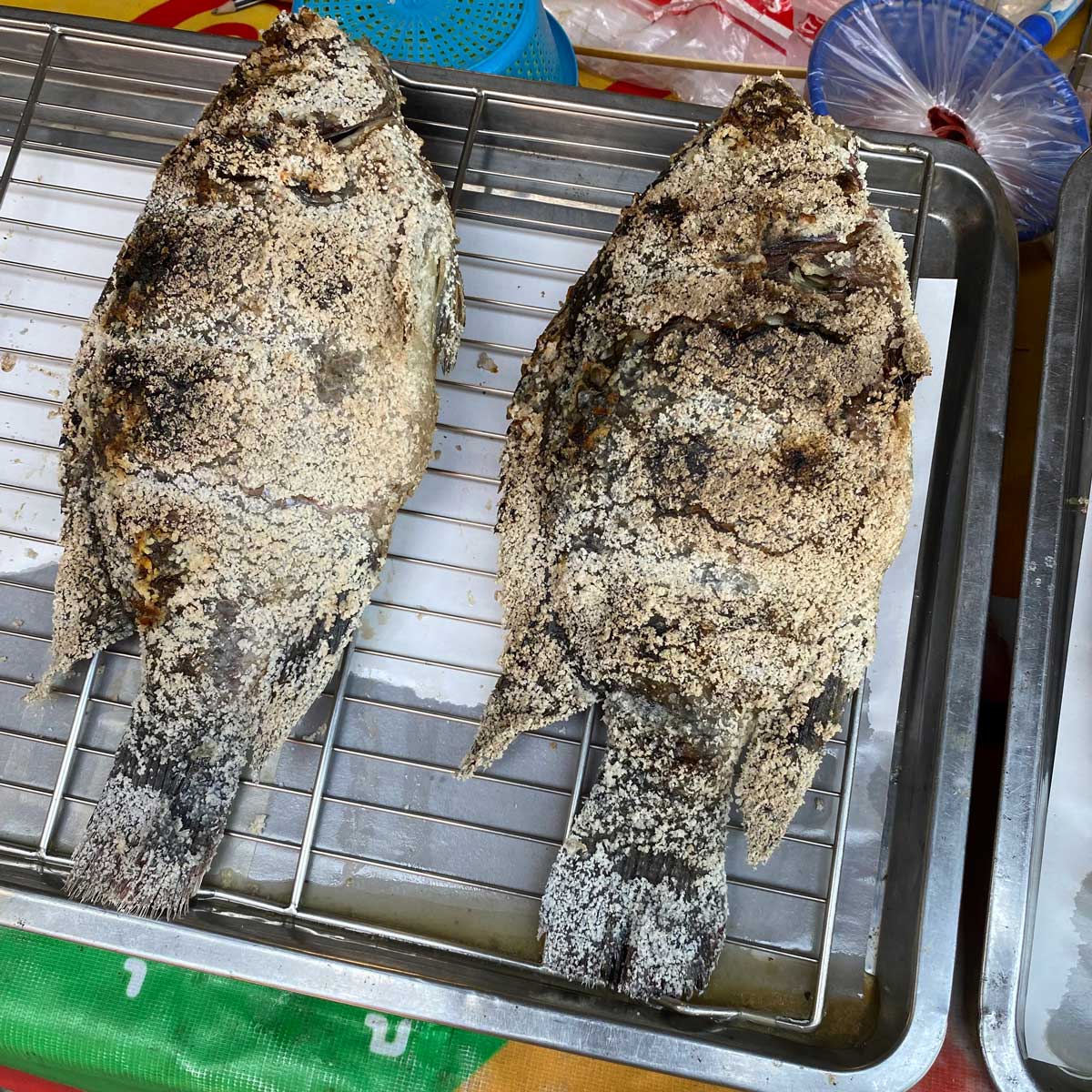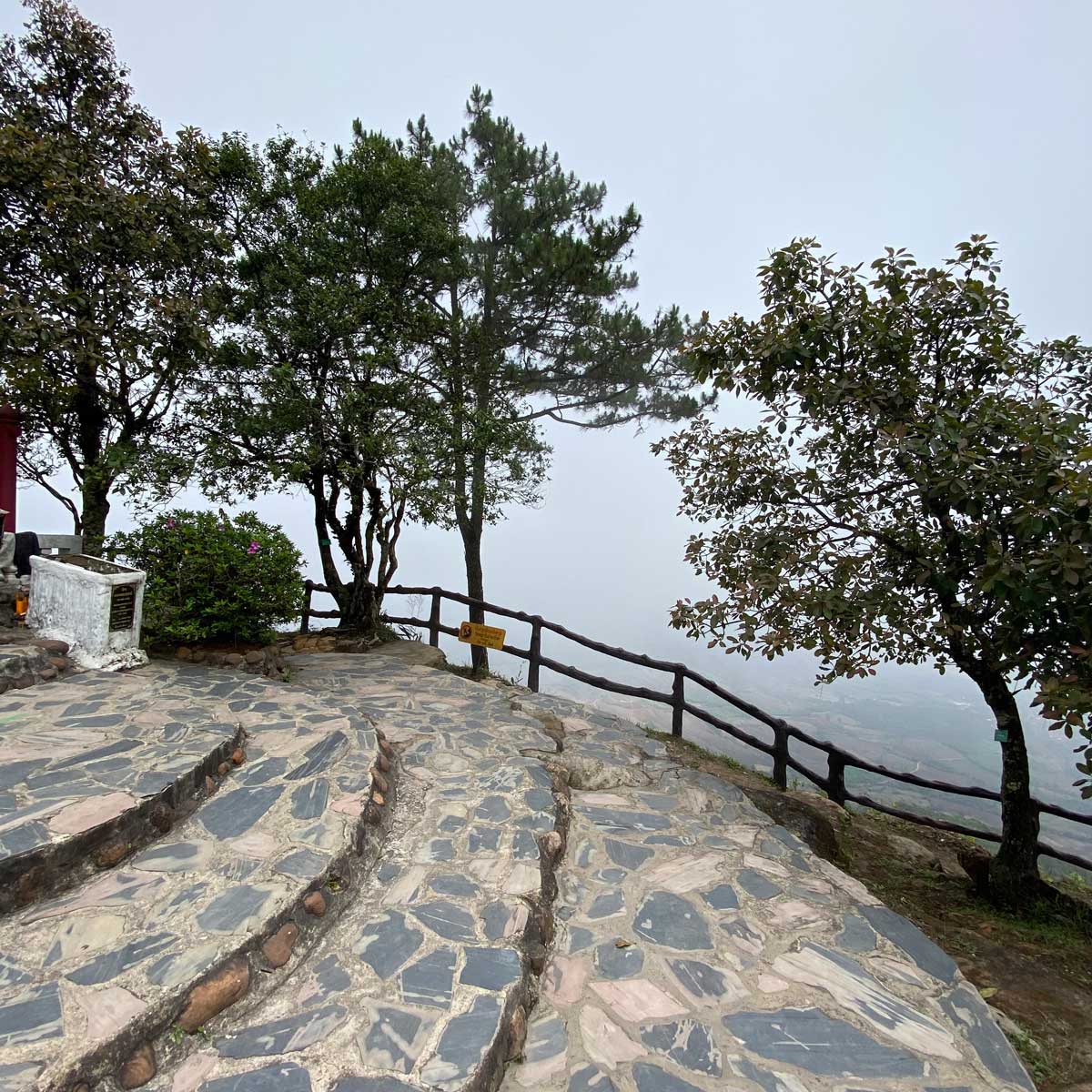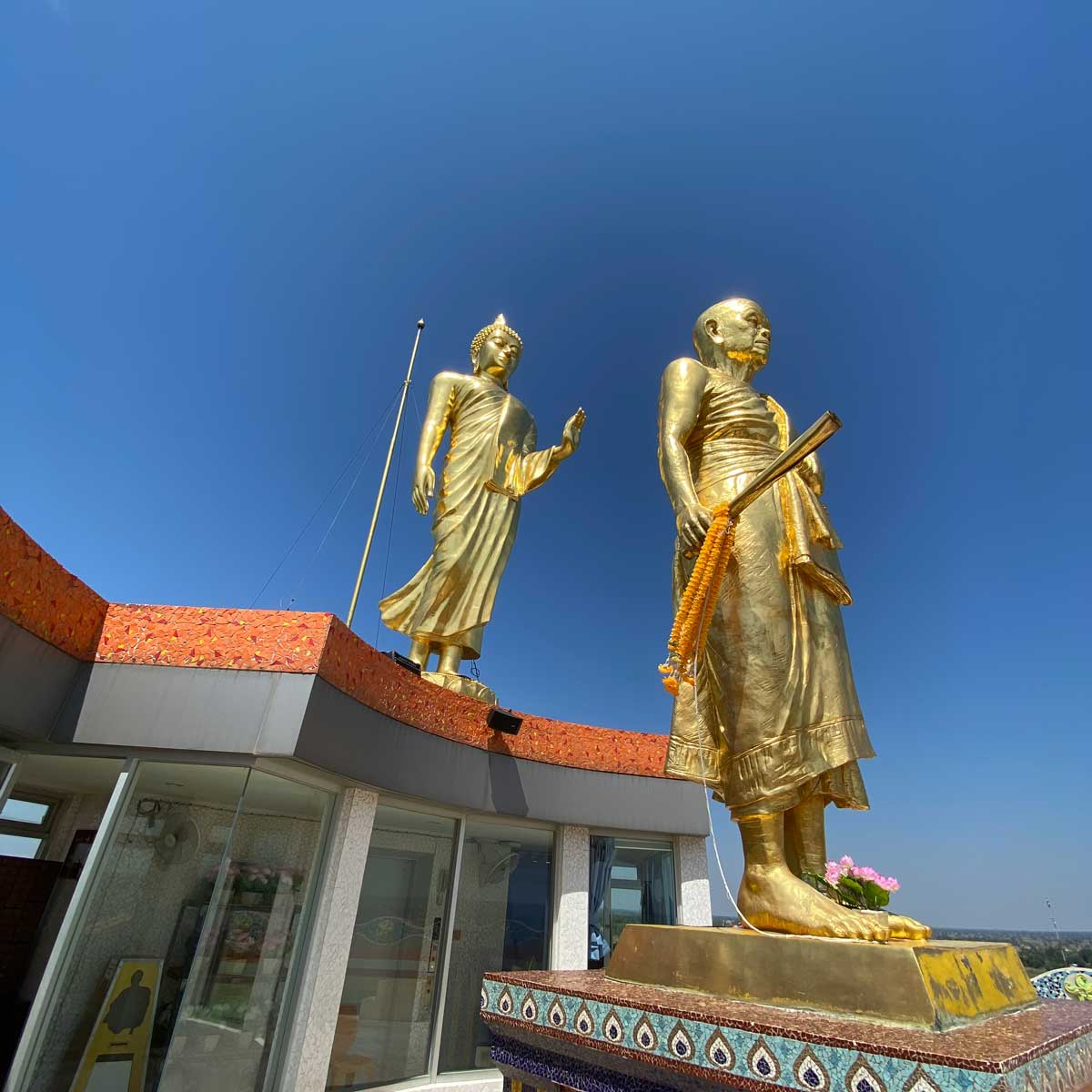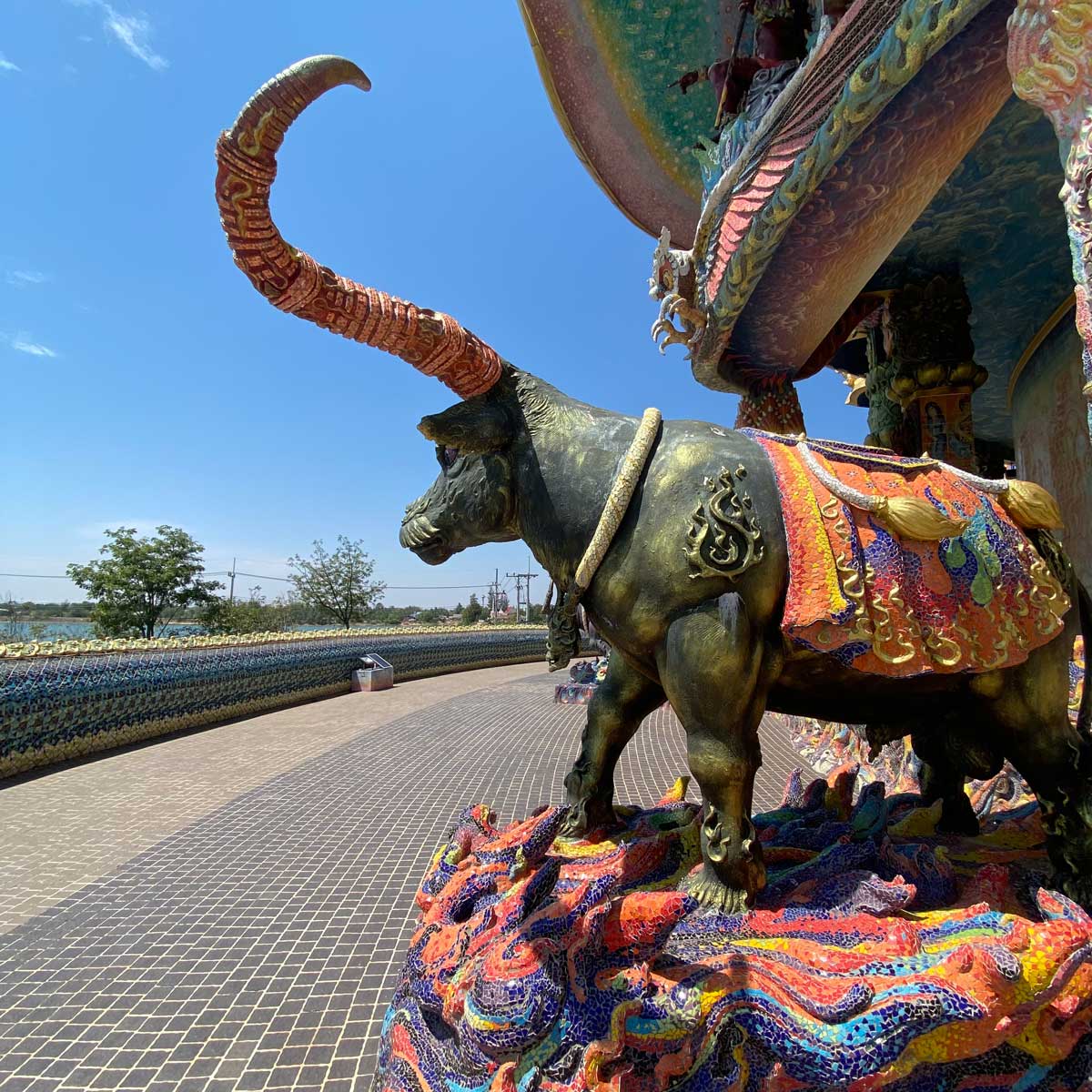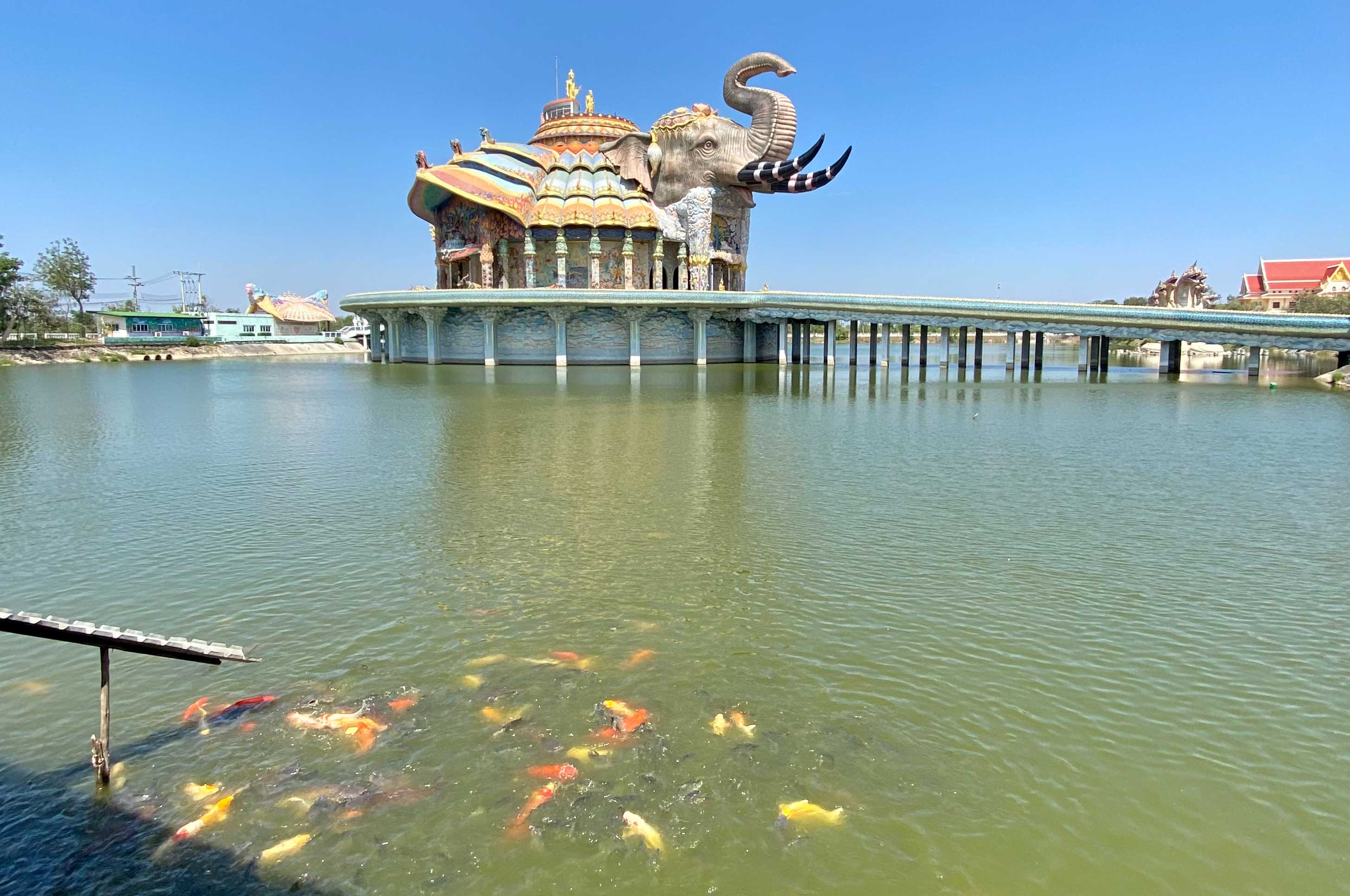Self-Driving Around Thailand
During the Covid pandemic Thailand was one of the first countries in Asia that opened up to tourists – although with some restrictions. That gave us an opportunity to explore less visited parts of the country – we rented an automobile and did the driving ourselves. Despite the fact that Thailand is notorious for its reckless driving and high accident rates.
Our first trip was to explore the countryside of the Eastern seabed. First stop was Viharn Sien, a museum and shrine designed in the style of a royal Chinese temple located around 20 kilometres south of Pattaya. It was developed in 1987 by a wealthy Thai Chinese on land provided by the late king Bhumibol Adulyadej to house an art collection gifted to the Chakri dynasty and as a symbol of friendship between Thailand and China. Entrance is 50 baht only and barefoot. The shrine is surrounded by a garden where you can sit in the shade of tree, feel the cool breeze, and listen to the cuckoo singing.
A few minutes’ drive further down the road we found Khao Chi Chan, also known as Buddha Mountain. It is a large 109 m x 70 m golden Buddha laser engraving, created in 1996 to commemorate the 50th anniversary of the coronation of King Bhumibol. This attraction was closed so we had to look at the Buddha through the gates.
The seaside town of Rayong is most famous for its fish sauce industry. As most of the country, everything closed at 9 pm and half an hour later it was virtually dead – though streetlights were still on. The nice beach in the area attracts the Bangkokian urbanites for a weekend getaway, and as such the town also has its strip (no pun intended) of go-go bars, as claimed by the official online tourist information.
Moonlight Beach is one of them, normally packed with sun worshippers. The beach area has some backwaters where shrimp farming took place, but this had to be abandoned and the mangrove took over. The local authorities have built a set of walkways and bridges on the water and inside the mangrove forest for willing visitors to enjoy.
This exploring by accident delayed our plans, and we only managed to drive about 60 kilometres before the shadows grew longer and we had to search for a beach resort. We finally found one in the village of Mae Pim, a retro resort from the happy days of the fifties — or maybe even earlier.Our second trip explored the area on the western side of the Bay of Bangkok. We left Ploenchit Grand View Mansion on a Tuesday morning and took the highway towards Damnoen Saduak – the famous floating market. Sorry to say, but during the last decades, the Damnoen Saduak has become a tourist trap, attracting both domestic and foreign tourists. However, with the Covid pandemic restricting foreign arrivals, it was mainly locals who did business on the canals and being a sole “farang” (foreigner) I was chased by vendors trying to sell me something.
In the adjacent Lao Tuk Luck Floating Market a bit further south towards the seaside town of Hua HIn most of the original residents are Thai-Chinese descendants (from Teochew and Hainan). Lao Tuk Luck Floating Market used to thrive until the construction of roads but is now having a renaissance with cafes and other eateries.
After a few nights in Hua Hin, we journeyed up to Kanchanaburi to travel on the Death Railway to the prisoners of war cave, about 70 minutes towards Myanmar. The irony is that the death of prisoners and other forced labourers are now the livelihood of many people as this railway journey has become a tourist attraction. The Bridge on the River Kwai in the Thai town of Kanchanaburi is made famous by a 1952 novel by the French novelist Pierre Boulle, published in French in 1952 and in an English translation by Xan Fielding two years later. Subsequently, even more fame was bestowed on the bridge after the Oscar winning film by David Lean was released in 1957 — starring William Holden and Alec Guinness.
The story deals with the plight of Allied prisoners of World War II forced by the Imperial Japanese Army to build a bridge for the "Death Railway” so named because of the large number of prisoners and conscripts who died during its construction. The Death Railway has a long history since the Second World War, beginning at Nong Plank Station to Thanbyusayat in Burma. The railway construction began with death because they had to rush to construct. There were obstacles such as diseases, illnesses, weathers, food, shelter, suffered living and hard work which has been entitled as "the Death Railway.” The railway gave the Japanese access to British India via Burma. The dead are buried at the War Cemetery in the town of Kanchanaburi.
Today the train, still named Death Railway, has three daily departures for the two-hour long journey towards the Burmese border, passing through some spectacular landscapes. The bridge itself is a popular selfie location.
Our third and longest trip was touring around the northeast of Thailand, also known as Isan. We were heading towards Khao Yai National Park, after which we would drive further into the Isan area. Our first stop was the small town of Nakhon Nayok. As we approached the town torrential rain suddenly fell on us, and we sought refuge at the Tesco Lotus shopping mall and for less than 200 baht we filled our stomach at the food court and decided to make it the day. We found a small and neat boutique hotel at 750 baht a night.
The next morning, we left for Khao Yai National Park, and the drive through the national park would take us about two hours plus time for stops and picture taking. We were charged a hefty entrance ticket of 400 baht a person plus a vehicle fee before being able to drive into the deep jungle, a mountainous area with tropical forest, waterfalls, elephants, and birdlife. The park was established in 1962 as Thailand's first national park and named an ASEAN national heritage in 1984 and it is the third largest national park in Thailand. The area, although only about an hour’s drive from Bangkok, was historically known as a refuge for criminals due to its remoteness and vast inaccessible land.
Lands adjacent to the national park are becoming increasingly developed into luxury hotels and golf courses, so acquiring land for future wildlife conservation efforts is becoming problematic. Homes and residential villas have been built illegally within the limits of the protected area and illegal logging is a problem. Many species are threatened, and tigers haven’t been seen for at least twenty years. Among the park’s many waterfalls we find the 80-metre Heo Narok, and Heo Suwat made famous by the film “The Beach,” starring Leonardo DiCaprio. However, to reach the waterfall, a rather long hike was needed.
Nakhon Ratchasima is a major gateway to Isan, a mostly rural region distinguished by Lao cultural influences. It is also known as the breadbasket of Thailand – or rather the rice basket. A third of Thailand’s population live here, and the language is closely related to Lao, in fact the Isan people themselves still refer to their language as Lao, especially in non-official settings. However, spoken Lao is mutually intelligible with Thai, very much like what the Scandinavian languages are.
Next destination was Phanum Rong Historical Park in Buri Ram province – about two and a half hours’ drive slightly in a south-eastern direction. After having paid our farang priced entry fee we drove our car right up to the temple. It is a Hindu Khmer Empire Temple complex set on the rim of an extinct volcano at around 400 metres elevation and was built at a time when Khmer social-political influences were significant in the area. Construction is of sandstone and laterite and was built between the 10th and 13th centuries. Dedicated to Shiva and symbolises Mount Kailash in Tibet, his heavenly dwelling.
After three days of grey skies with the occasional downpour we saw a glimpse of sunshine as we left Buriram heading for Phimai Historical Park — another Hindu Khmer religious site. The Phimai Historical Park preserves an 11th–12th-century walled temple, similar in style to Cambodia's Angkor Wat, built by the Khmer Empire. Google told us it would take 80 minutes to complete the journey in our Honda City 1.5. But what does Google know about road works and red lights? After two hours we finally made it.
Smash in the middle of the town one finds this pearl of an ancient Khmer temple ground with its distinctive architecture. It’s not big, more like a mini-Angkor Wat, but Phimai was once an important town at the time of the Khmer Empire, that had its hay days in the 10th to 15th century. Thailand has more than 2,000 Khmer ruins, but Phimai, which is now a protected historical park, is considered one of the most important. Sabaidee Phimai.
Buddhist temples and stupas hold a different sensation than the grandeur of cathedrals and mosques. At least for me as a non-believer. Although Buddha was born in what is now Nepal, footprints of Buddha abound throughout Asia, dating from various periods. Thailand being one of the leading countries of Theravada Buddhism has several thousands of temples—small and large—scattered around the country. A visit to a few of them is mandatory.
The Red Lotus Park about 40 km south of Udon Thani also has a wat or two. But it is not the wats that attract tourist from far and wide, but a lake colloquially known as Red Lotus Lake, simply because, exactly — it’s covered with red lotus flower. That is, you need to take a boat deep into the middle of the lake to see the lotus flowers. As we didn’t do our homework properly, we came to learn that boats only leave in the early morning, at sunrise, as that is when the lotus flowers open up. “The early morning sun twinkles on the surface of the water as the boatman slowly guides his vessel to shore. But there is still no sign of the star attraction. It’s only after clambering aboard and travelling for twenty minutes or so into the heart of Nong Han Lake that the scene begins to change,” we later learned from some pamphlet.
We have been blessed with cold weather perfect for exploring nearby historical parks in the Udon Thani area. With only 20 degrees, grey skies, and a little drizzle it makes perfect conditions for walking around without sweat dripping from your forehead into your eyes.
As late as 1994, people from the village of Huai Dua stumbled upon ancient mollusc fossils on the cliff of an abandoned rock quarry in the village. According to the local museum, the fossils are freshwater bivalves of the Cretaceous Era, about 150-120 million years ago. The amounts and types of the molluscs discovered are most abundant in Isan. Today a dinosaur park and a museum has been developed in the site—about a 45 minutes’ drive north-west of Udon Thani.
Phu Phra Bat historical park is distinguished by its unusual rock formations around which religious shrines have been constructed. Some formations also feature prehistoric rock paintings. Phu Phra Bat's rock formations are the setting for a local legend about a king, his daughter, and her suitor. The park's most striking rock formation, Hor Nang Usa, is where the overprotective king forced his beautiful daughter to live. Despite her confinement, she was able to get a message out to her suitor prince and the two were married in defiance of her father. Early shrines featuring Hindu and Buddhist influences date to the seventh to tenth centuries, explained by the ticket seller.
Thailand has an abundance of national parks. Phu Ruea National Park is yet another one, home to Phu Ruea Mountain top – known to be one the coldest spot in Thailand at 1,365 metres above sea level. It’s located a few kilometres north of the village of Nong Bua Phu Rea in Loei district. Loei is in a mountainous and forestry region close to the Mekong River and Laos. The Temperature was 16 degrees when we visited at 10:30 am, during the winter it can go down to below freezing point. After paying our tickets at foreigners’ price of 200 baht each, we could drive all the way up to the top save for the last 700 metres, where a tuk-tuk was at our service. From the top you can see all the way to Laos if it wasn’t for the fog.
After nearly three months in Corona restricted Thailand, we have got used to closed down restaurants and those that still exist closing at 9 pm. To our pleasant surprise, by accident we found a small town, unknown to us and named Chum Phae (population 20,000) in the middle of Isan where evening markets and restaurants were open until one minute to midnight. The town even had a modern hotel with a convention centre. We were greeted by an English-speaking trans woman (or khatoey as they are called here) at the reception as we checked in, and she obviously noticed we are a gay couple, so she showed us the room at the top floor herself chit chatting in the elevator. She could easily have done well at a Miss Thailand contest, which are popular in this area.
The town has no special attractions for tourists, but Chum Phae is a quaint little town and quite rewarding to wander about. Of particular interest would be the large marketplace, most of it under a roof with a high ceiling. For sale is everything from shoes and garments to mobile phones and fresh food, including “live” fish flapping around in the buckets. For such an inconspicuous town there were quite a few coffee shops indicating some affluent lifestyles.
Khun Luang Pho was a noble and revered monk that spent years meditating in the jungles of Laos and Cambodia. He was ordained in the wat in the village of Ban Rai in his early twenties. When he returned to the village, located in the western part of the province of Nakhon Ratchasima, he sought to revitalize the dilapidated and impoverished area, collecting large donations to rebuild hospitals, schools, and roads. And an amazing temple.
In the centre of a man-made pond, stands an elephant-liked ceramic shrine alongside an, by no means ordinary, wat—or temple. The shrine is beautifully decorated with enamelled tiles. On the roof top, to where you are able to walk up, are the statue of a walking Buddha and that of Khun Luang Pho himself. Surrounding the building one finds depictions of Buddhism's sacred texts. The shrine is Asia's largest ceramic mosaic shrine with more than 20 million pieces of mosaic.
It was completed in 2013, just two years before Khun Luang Pho passed away. Surely and amazing construction.
March 2022



